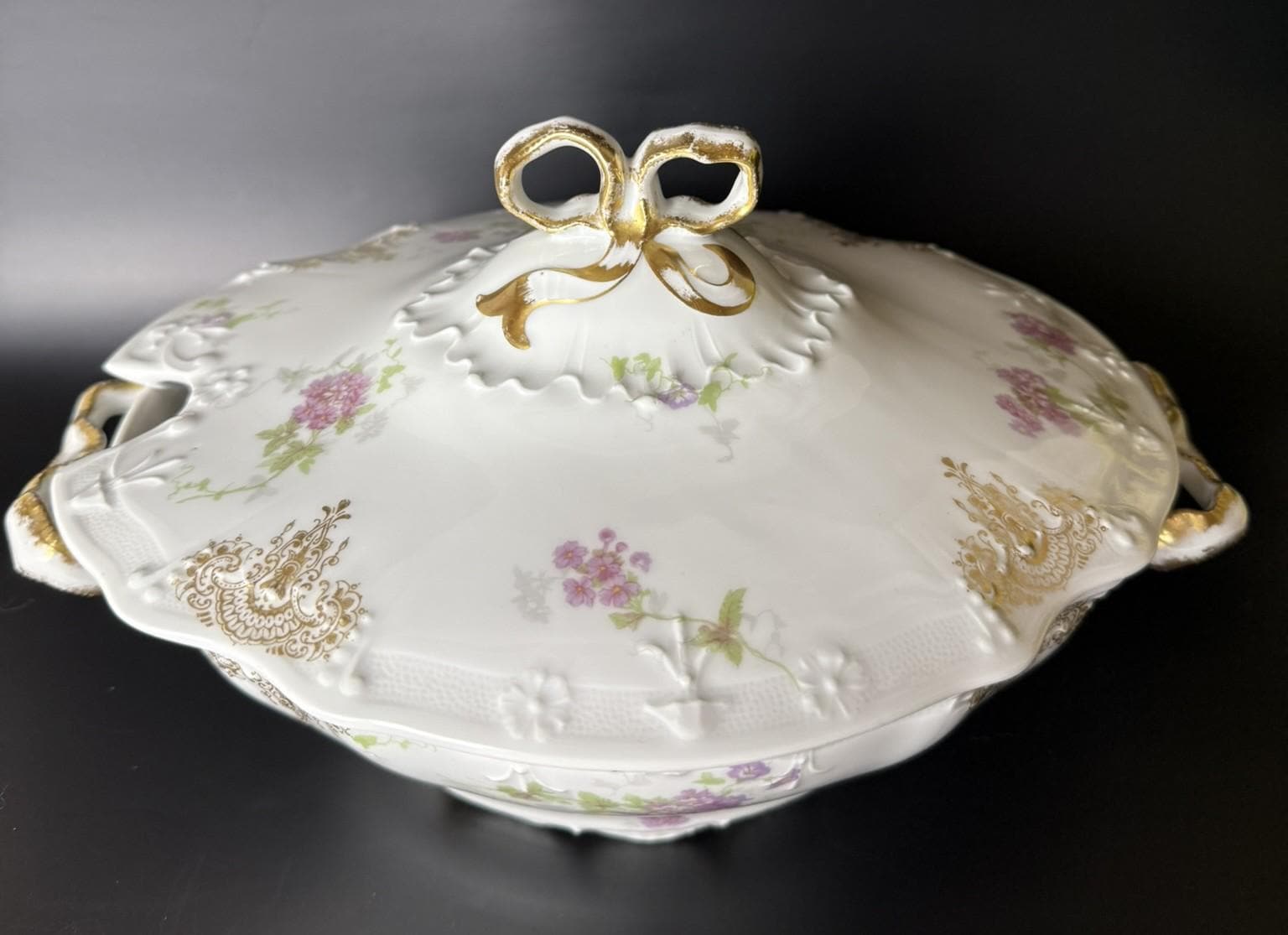If you’ve ever turned over a delicate porcelain dish or vase and noticed the stamp “Limoges France,” you may have wondered what that really means. For vintage lovers and collectors, this mark is more than just a name — it carries a rich history of craftsmanship, artistry, and a touch of French elegance.
The Story of Limoges Porcelain
Limoges is a city in central France that became world-famous in the 18th century for its porcelain. The region had something special: rich deposits of kaolin clay, the essential ingredient for making fine porcelain. Once kaolin was discovered near Limoges in the late 1700s, the area quickly became a hub for high-quality porcelain production. By the 19th century, “Limoges” porcelain was being exported all over the world. Wealthy households prized it for its fine white body, translucence, and durability. Collectors today still seek out Limoges pieces for their craftsmanship and artistry.
What the “Limoges France” Stamp Really Means
The phrase “Limoges France” on a piece doesn’t refer to a single company. Instead, it’s a geographical designation. It means the piece was made in the Limoges region, but it could have come from one of many different factories. Some well-known manufacturers include Haviland, Bernardaud, and Tressemanes & Vogt. Each had its own style and marks, but all were held to the high standards that made Limoges porcelain famous.
How to Recognize Authentic Limoges
When you come across a stamped piece, here are a few things to keep in mind:
- Look for the mark: Authentic Limoges pieces typically carry a factory or decorator’s stamp, often under the glaze. “Limoges France” is the most common.
- Examine the quality: Limoges porcelain is known for being thin, smooth, and slightly translucent when held up to light.
- Check for hand-painted details: Many Limoges items feature hand-painted floral motifs, gilded accents, or intricate designs.
Why Collect Limoges?
Limoges porcelain carries both artistic and sentimental value. Some people collect it for its beauty and decorative flair, while others treasure it as family heirlooms. Whether it’s a hand-painted trinket box, a gilded dinner plate, or an ornate vase, each piece tells part of the long story of French porcelain.
A Personal Note from Angela’s Finds & Faves
When I come across a Limoges piece, I always pause — not just because of its beauty, but because I know it connects us to centuries of artistry and tradition. Holding one of these items is like holding a piece of history, crafted with care in the heart of France. If you spot “Limoges France” on the bottom of a piece, you’ve discovered more than just porcelain. You’ve found a little chapter of French culture — something elegant, timeless, and enduring.

